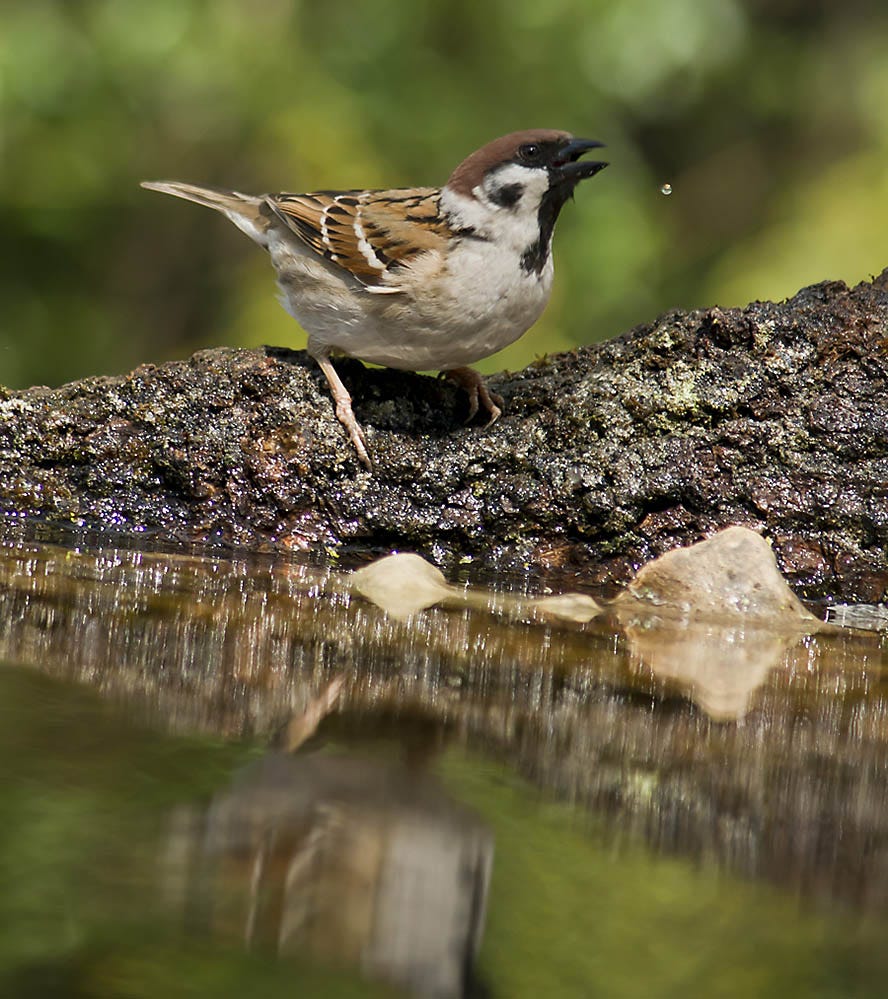How to Identify Birds at Bird Feeders

It’s no surprise for your customers to get excited by their birdfeeders and want to know more about the birds visiting their yard. To help them along, you should try to learn about the birds in your area so you know the best feeders and seed to stock at your store.
Helping customers identify the birds in their yard will make them loyal customers, so consider these tips for guiding their quest to learn more about their birds. Once you know your local birds, as well as their habits and preferences, you will be able to offer customers the feeders and foods they like best.
Bird Guides
A bird guide or field guide is a logical place to start when you want to identify a mystery bird. Have one on hand at your customer service desk. You may even want to keep one next to your feeders – just attach it to a shelf with a chain.
Once you find a guide you like, order a few copies for the store for customers ready to buy right away. Even if you don’t sell them, get a few to offer as contest giveaways or door prizes.
Additionally, make a list of several websites that are helpful for bird lovers. Make a few dozen copies of the list and hand them out during events or leave them in a shelf hanger.
Some websites for bird IDing are:
Help from Technology
Gathering all this information in the minute or two that the bird sits at your feeder or bushes can be tough. Recommend to your customers that they try to snap a close up image of their favorite feeder birds. To do so, advise them to get a window feeder that suctions to their window. This allows a face-to-face experience that allows for great pictures.
For even better pictures, suggest they buy and mount a game camera to capture all the activity at their feeder!
Bird IDing Basics
Turning through page after page of your typical field guide can be an overwhelming and time-consuming task. The same goes for looking through dozens of webpage photos! So do your best to help your customers with their questions by asking for the right details.
These will help you and your customers gather the facts about the mystery bird. As they study the bird outside their window, ask your customers to gather these information points: What size is it?
- What colors are most prominent?
- What is its tail shape?
- What is it eating or drinking?
- Where did you see it?
- What region are you in?
- What marks were on it?
- See more on each of these questions below!

What Size Is It?
Compare the bird you’ve spotted to birds you know already. Is this bird larger or smaller than a robin or a sparrow? This may help you decide between similar species.
Most bird guides and reference sites provide the average size range for the birds they feature. To help you gauge how big your feeder bird is, know the basic measurements of your bird feeder and guess its size based on that.
What Colors are Most Prominent?
Pay attention to the overall color, but also the colors of different body parts. Remember that most birds are actually many colors, so pick out the most prominent features.
- What color is its back?
- What color is its underside?
- What color is its head?
- What color are its wings and tail?
What Is Its Tail Shape?
The tail can be the main giveaway to the bird’s identification. It can help you tell the difference between types of sparrows, swallows or other look-alikes.
- Is the tail long, stubby or in between?
- Does the tail have a deep fork or notch in the middle?
- Is the tip of the tail pointed, rounded or square?

What is it Eating or Drinking?
A bird’s diet is another helpful indicator of what species it is. Most birds will vary their diet throughout the year, but those that come to your feeder will be regular visitors.
- What seed is it eating?
- Is it drinking water (or bathing)?
- Is it trying to get nectar?
- Is it foraging in the lawn?
- Is it foraging under the feeder?
- Is it visiting flowers?
- Is it searching for food on a tree or bush?
Where Did You See It?
Where birds hang out can also be a good indicator to their identity. Shy sparrows stay in the brush or grass. Field birds want more open spaces and woodpeckers are always hanging from a tree or branch. You can check this information in the Habitat section of your reference guide.

What Region Are You In?
As you search for your bird ID, remember that certain bird species have very defined ranges and rarely leave them. Considering the range is a huge help to narrow down your search.
What Marks Were On It?
Field marks are details that can seal the deal on your bird’s identification. Field marks are the distinctive patterns, stripes, spots, and colors a bird has. These certainly can make it much easier to zero in on your mystery bird. Here are a few questions to consider.
- Are there streaks or dots on its breast and/or belly?
- Are there thin stripes or wide bars on its wings or tail? Is it a single bar or two bars?
- Does the tail have a different colored band at the tip?
- Is there a ring or band around its neck?
- Is there a stripe or distinct ring at the eye?
